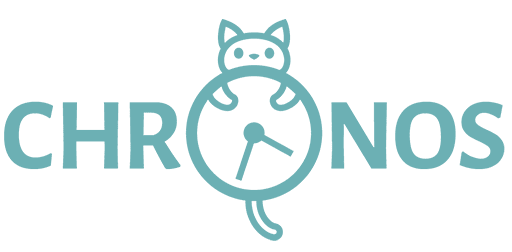AAHA/VMG Chart of Accounts: What is It?

Written by the veterinary experts at Chronos Vet
Veterinary practice management runs on more than patient care, it also depends on accurate, consistent financial tracking. The AAHA/VMG Chart of Accounts gives veterinary practices a standardized way to record income, expenses, and financial data so that performance can be compared across the industry. This tool has become a benchmark for financial organization, helping practice owners make informed business decisions and identify opportunities for growth.
Whether you manage a small clinic or a multi-location hospital, understanding the AAHA/VMG Chart of Accounts can transform how you track, report, and interpret your financial performance. Chronos Vet works with practices every day to implement and optimize this system, helping owners reach new levels of financial clarity.

Understanding the AAHA/VMG Chart of Accounts
The AAHA/VMG Chart of Accounts is a standardized accounting framework created through a collaboration between the American Animal Hospital Association (AAHA) and Veterinary Management Groups (VMG). Its purpose is to provide veterinary practices with a consistent, organized way to categorize and report financial information.
Rather than each practice using its own accounting codes—making industry benchmarking difficult—the AAHA/VMG Chart of Accounts offers a uniform structure. With this system, veterinary practices can:
- Track income and expenses in the same categories as other practices
- Compare performance with industry averages
- Streamline accounting processes and reduce errors
- Produce cleaner, more reliable financial reports
Chronos Vet helps practices integrate this framework into daily workflows so that data becomes not only accurate but also actionable.
Why the AAHA/VMG Chart of Accounts Matters
Veterinary medicine is a unique industry. Financial tracking for a veterinary practice doesn’t look the same as it does for retail stores, restaurants, or general service businesses. That’s why the AAHA/VMG Chart of Accounts is so valuable. It’s designed specifically for the veterinary field.
By using this standardized format, practices gain several benefits:
- Consistency: Financial records are categorized the same way every time, making reports accurate and easy to understand.
- Comparability: Practices can see how their numbers stack up against industry benchmarks.
- Efficiency: Staff and accountants save time because they’re all working from the same playbook.
- Decision-making support: Financial data is clear and actionable, helping owners identify profit centers and areas for cost control.
Chronos Vet has worked with practices that struggled with financial reporting before implementing this system. After adoption, their numbers finally started telling the right story.
How the AAHA/VMG Chart of Accounts Works
The AAHA/VMG Chart of Accounts uses a numerical coding system to categorize every type of transaction a veterinary practice might record. These codes are organized into major categories: assets, liabilities, equity, income, and expenses, and broken down into more specific subcategories. For example:
- Income Categories: Wellness exams, surgery, dentistry, imaging, laboratory, boarding, retail products, and more.
- Expense Categories: Medical supplies, pharmaceuticals, staffing, equipment maintenance, marketing, continuing education, utilities, and facility costs.
- Balance Sheet Accounts: Cash, accounts receivable, accounts payable, loans, and equity.
Chronos Vet helps practices customize their chart setup, making sure the codes align with their services and financial goals. Many practice management systems can also be tailored to follow this structure, which makes adoption smoother.
What Are the Benefits of Using the AAHA/VMG Chart of Accounts?
Improved Benchmarking
Because this framework is widely used, practices can directly compare their performance to industry standards. This makes it easy to see:
- If costs are too high
- If staff utilization is efficient
- If revenue per client matches industry norms
Better Financial Transparency
The chart makes it easy to separate income sources and expenses. For example:
- Diagnostics vs. surgical income
- Marketing vs. administrative costs
- Product sales vs. professional services
Easier Strategic Planning
With accurate numbers, practices can:
- Create realistic budgets
- Plan for future investments
- Evaluate service performance
- Make decisions about expansion or new hires
Implementing the AAHA/VMG Chart of Accounts in Your Practice
Transitioning to the AAHA/VMG Chart of Accounts requires planning, but the payoff is worth it. The process typically involves:
- Reviewing Current Accounting Systems: Identify how your transactions are currently categorized and where changes need to be made.
- Customizing for Your Practice: While the chart is standardized, it can be tailored slightly to fit the unique services you offer.
- Training Your Team: Everyone responsible for entering financial data needs to understand the new categories and codes.
- Integrating with Software: Update your accounting or practice management software to follow the new structure.
- Monitoring and Adjusting: Regularly review reports to ensure entries are being coded correctly and consistently.
When implemented correctly, the AAHA/VMG Chart of Accounts becomes part of the practice’s daily operations, not just a once-a-year accounting exercise.
Common Challenges and How to Overcome Them
Some practices encounter obstacles during implementation.
Resistance to Change
Staff may hesitate to learn a new coding system. The solution:
- Provide clear training
- Show how the chart simplifies their work
- Share how Chronos Vet supports practices during this transition
Misclassification of Transactions
Errors happen when categories aren’t fully understood. Practices can avoid this by:
- Offering refresher training
- Running audits
- Using Chronos Vet for periodic oversight
Software Limitations
Not all systems support this chart natively. Options include:
- Customizing your current software
- Working with providers to enable compatibility
- Exploring updated systems with Chronos Vet’s guidance
The Role of Accountants in Implementation
Accountants are key partners in adopting the AAHA/VMG Chart of Accounts. They can:
- Help with customization
- Ensure compliance with financial reporting standards
- Provide benchmarking comparisons
- Train staff in accurate categorization
How the AAHA/VMG Chart of Accounts Supports Growth
One of the most powerful aspects of the AAHA/VMG Chart of Accounts is its role in helping practices grow sustainably. By clearly identifying where revenue is coming from and where expenses are going, practice owners can make data-driven decisions about:
- Expanding services that are most profitable
- Adjusting staffing levels for efficiency
- Managing inventory and supply costs more effectively
- Setting realistic revenue goals
This type of clarity is essential when preparing for major business moves, such as opening a second location, investing in new technology, or hiring additional specialists.
Why Now is the Time to Adopt the AAHA/VMG Chart of Accounts
The veterinary industry is facing rapid change: competition is growing, client expectations are shifting, and costs are rising. Practices that adopt the AAHA/VMG Chart of Accounts today gain:
- Stronger financial foundations
- Better industry comparisons
- A roadmap for long-term growth
Chronos Vet helps practices implement this system quickly and effectively so owners can focus on what matters most: caring for patients and growing their business.
Frequently Asked Questions About the AAHA/VMG Chart of Accounts
Can I customize the chart for my practice?
Yes. While the system is standardized, it can be tailored to fit your services. Chronos Vet specializes in helping practices customize implementation.
Does it work with my practice management software?
Most systems can be adapted to follow the framework. Chronos Vet assists in integrating the chart with your current tools.
How long does it take to implement?
Implementation time varies by practice size and complexity. With Chronos Vet’s guidance, many practices transition smoothly within a few months.
Take the First Step Toward Financial Clarity
The AAHA/VMG Chart of Accounts is more than a set of codes. It’s a tool for smarter business management in veterinary medicine. By standardizing financial reporting, it helps you benchmark performance, improve decision-making, and focus on services that truly drive profitability. Chronos Vet can help your practice understand, customize, and implement the AAHA/VMG Chart of Accounts so you can gain the clarity you need to grow. Book a free discovery call today to learn how we can guide your practice toward better financial management and stronger performance.
Recent Posts
About Us
Chronos was born from the same challenges your practice faces. Our founders implemented remote staffing in their own clinic and quickly saw incredible results. Now, we’re ready to help you achieve the same. Whether you need help handling phone traffic, managing back-office tasks, or reconnecting with lost clients, we’ve got you covered.
